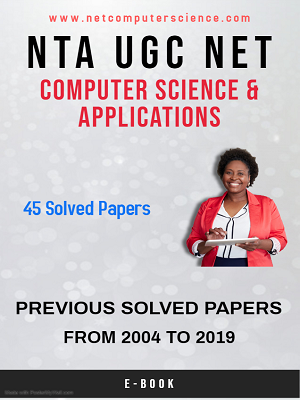Read the
following passage carefully and answer questions no. 11 to 15.
Some 2000 km down south of the Amazon, and
about the same time when the tidal waves were at their highest as a consequence
of the big clash of sea and fresh water at the Amazon delta most vigorously in
March and April (2018), more than 40,000 people were talking about the power of
water. Brasilia hosted the eighth edition of the World Water Forum (WWF – 8),
where heads of states, civil societies and private sector gathered to discuss
the present and future of mankind’s most valuable resource. This year’s theme
was ‘Sharing Water’, and the government authorities expectedly put forth a
political declaration, aimed at raising awareness about threats and
opportunities associated with water resources. Deliberations here would play a
decisive role in the periodic assessment of the sustainable development goals
of Agenda 2030.
Brazil has established a solid institutional
and legal framework for water management, based on the principle of
multi-stakeholder participation. Brazil has also been conducting one of the
boldest river inter-linking projects in which 500 km of canals will transfer
abundant waters from the Sāo Francisco basin to small rivers and weirs in one
of Brazil’s most arid areas, benefitting more than 12 million people in almost
400 municipalities.
India, too, has a large variety of water
resources. An institutional framework consisting of regional river boards and
river cleansing missions has been set up, while successive Central Governments
have made efforts to address the dire needs of irrigation and mitigation of
ground water depletion. As in the case of Brazil, a lot remains to be done in
India.
Adequate treatment of industrial waste-water,
the fight against contamination of riverbeds and assistance to drought affected
areas are high priority topics for both New Delhi and Brasilia. Due to these
commonalities, there is ample room for bilateral co-operation. Water is a
local, regional and global common and as such, collaboration is key to address
most of its associated threats.
Today, mankind is faced with two facts :
water is too powerful a force to be fought over, and too valuable a resource to
be lost. To harmonise these two conflicting aspects, sharing water is perhaps
the only meaningful motto for the ages to come.
11. As
per the text of the passage, the eighth edition of the World Water Forum was concerned
with
(1) Present
and future of mankind
(2) The
issue of high tidal waves
(3) The
power of water
(4) The role
of civil society in solving water-related problems
Answer: 3
12. Deliberations
on the theme ‘Sharing Water’ should facilitate
(1) Regular
evaluation of sustainable development goals
(2) The role
of private sector in preserving water resources
(3) The
establishment of institutional framework
(4)
Sensitisation of government authorities
Answer: 1
13. The
institutional framework of Brazil for water management
(1) Promotes
bilateral collaboration
(2) Provides
for multi-stakeholder participation
(3) Consists
of regional river boards
(4)
Addresses legal dimensions of water sharing
Answer: 2
14. What
would be of high priority to both New Delhi and Brasilia as regards river water?
(1)
Proposing water as a global common
(2) Sharing
water
(3)
Development of large water resources
(4) Fight
against contamination of riverbeds
Answer: 4
15. The
main focus of the passage is on
(1)
Resolution of water conflicts
(2)
Encouraging bilateral co-operation
(3)
Management of water as a valuable resource
(4) River
inter-linking
Answer: 3
16. Given
below are two statements, one labelled as Assertion (A) and the other labelled as
Reason (R). Read the statements and choose the correct answer using the code given
below.
Assertion
(A): Meanings of messages used in the classroom are arbitrary
in nature.
Reason (R):
Meanings are learnt as a result of one’s prior experiences.
Code:
(1) Both (A)
and (R) are true and (R) is the correct explanation of (A).
(2) Both (A)
and (R) are true, but (R) is not the correct explanation of (A).
(3) (A) is
true, but (R) is false.
(4) (A) is
false, but (R) is true.
Answer: 1
17. Given
below are two statements, one labelled as Assertion (A) and the other labelled as
Reason (R). Read the statements and choose the correct answer using the code given
below.
Assertion
(A): Classroom communication has a cultural dimension.
Reason (R):
Beliefs, habits, customs and languages are the cultural characteristics of
communication.
Code:
(1) Both (A)
and (R) are true and (R) is the correct explanation of (A).
(2) Both (A)
and (R) are true, but (R) is not the correct explanation of (A).
(3) (A) is
true, but (R) is false.
(4) (A) is
false, but (R) is true.
Answer: 1
18. In
a classroom, teachers and students use self-interest issues to judge
(1) Their
acceptability
(2)
Uncritical dispositions
(3) Negative
re-inforcement of ideas
(4) External
non-verbal cues
Answer: 1
19. Variables
that affect the information processing in a classroom are
(i)
Perception levels
(ii) Learned
habits
(iii) Attitudes,
beliefs and values
(iv)
Selectivity factor
(v) Market
expectation
(vi)
Institutional intervention
Choose the
correct answer from the code given below:
Code:
(1) (i),
(ii), (v) and (vi)
(2) (ii),
(iii), (iv) and (v)
(3) (iii),
(iv), (v) and (vi)
(4) (i),
(ii), (iii) and (iv)
Answer: 4
20. Given
below are two statements, one labelled as Assertion (A) and the other labelled as
Reason (R). Read the statements and choose the correct answer using the code given
below.
Assertion
(A): Selective exposure in the classroom is dependent upon
students’ perceptions and knowledge about the source of information.
Reason (R):
The effectiveness of the communication source determines the selective exposure
of students to information.
Code:
(1) Both (A)
and (R) are true and (R) is the correct explanation of (A).
(2) Both (A)
and (R) are true, but (R) is not the correct explanation of (A).
(3) (A) is
true, but (R) is false.
(4) (A) is
false, but (R) is true.
Answer: 1









0 Comments